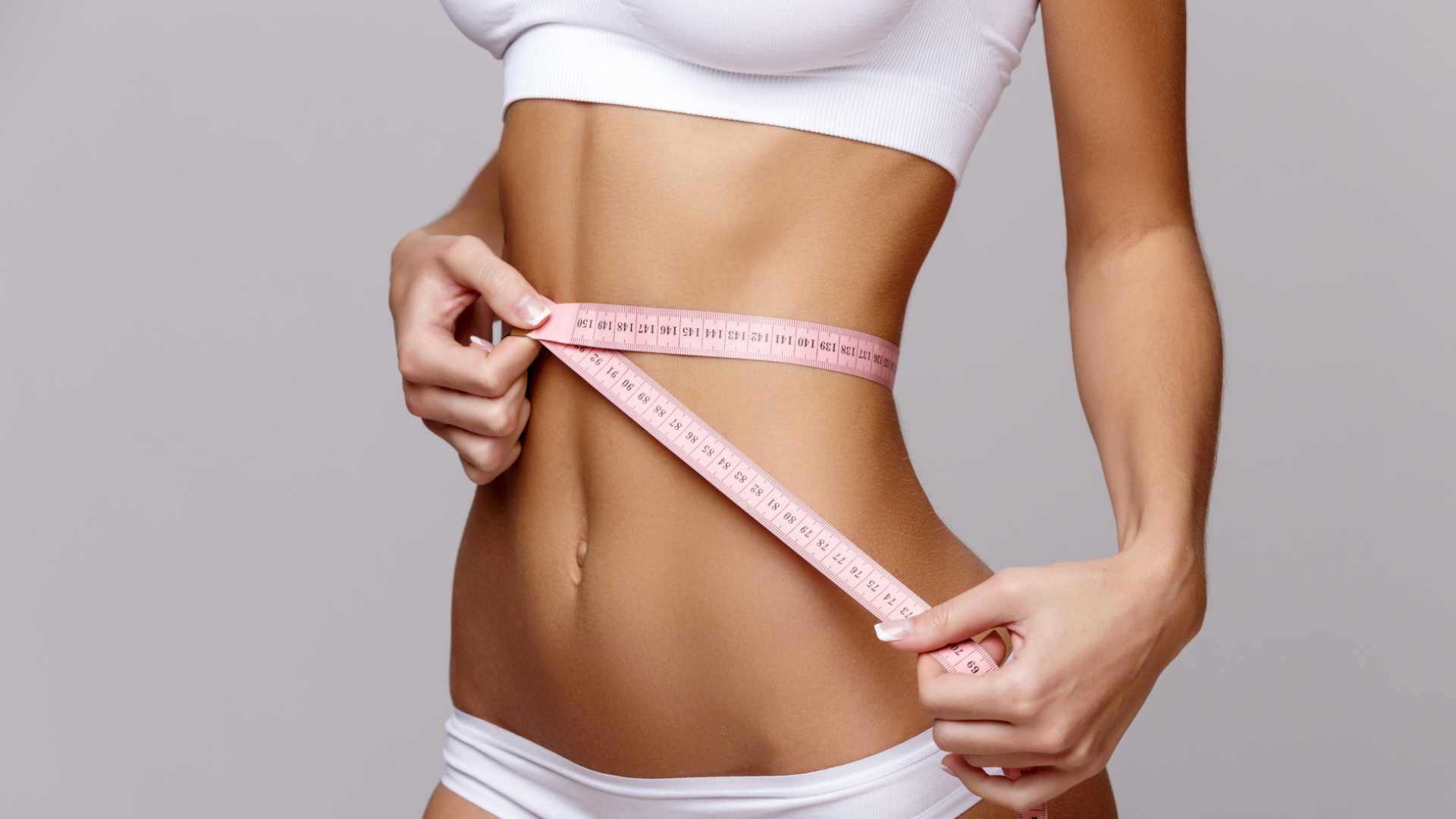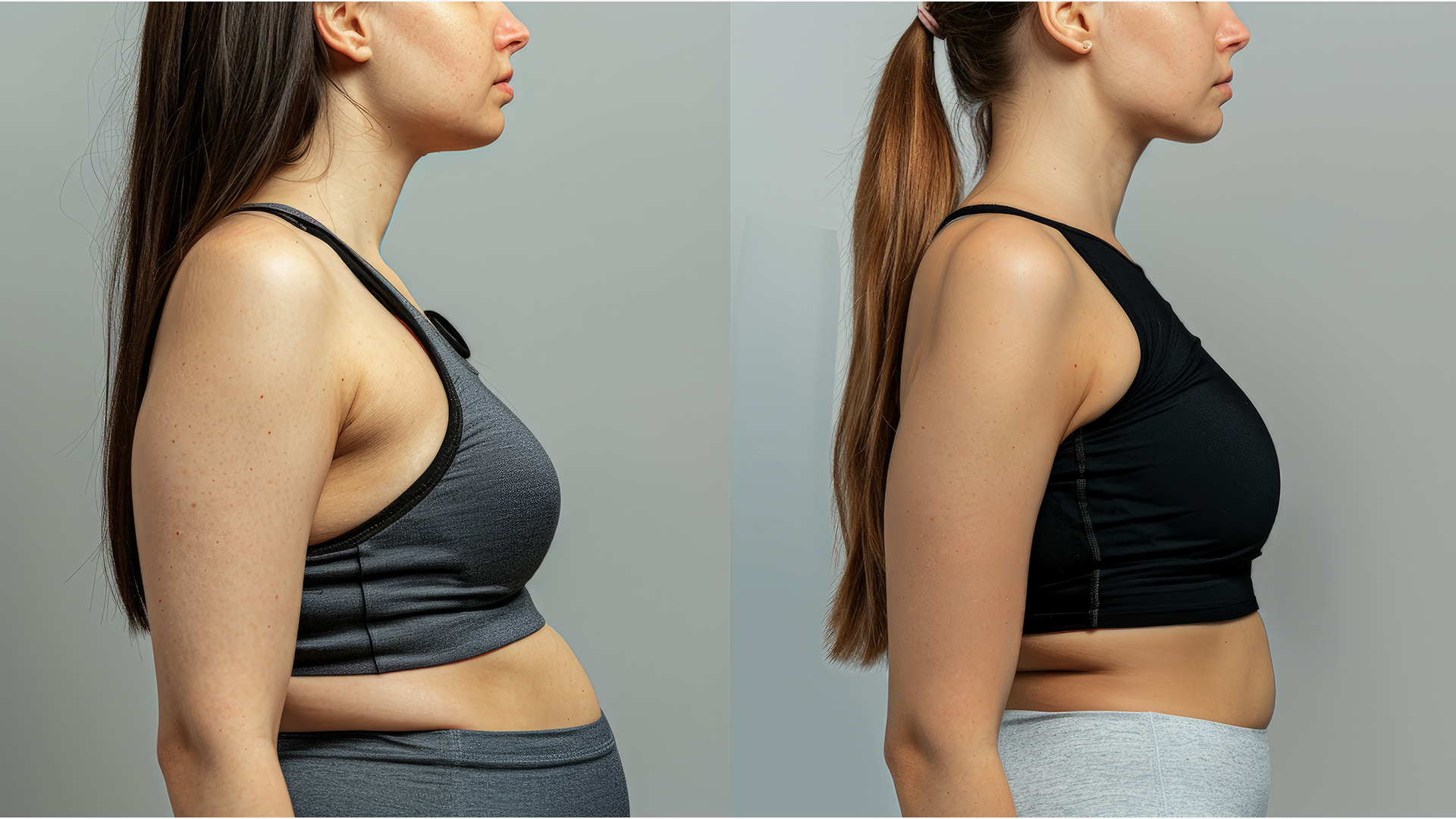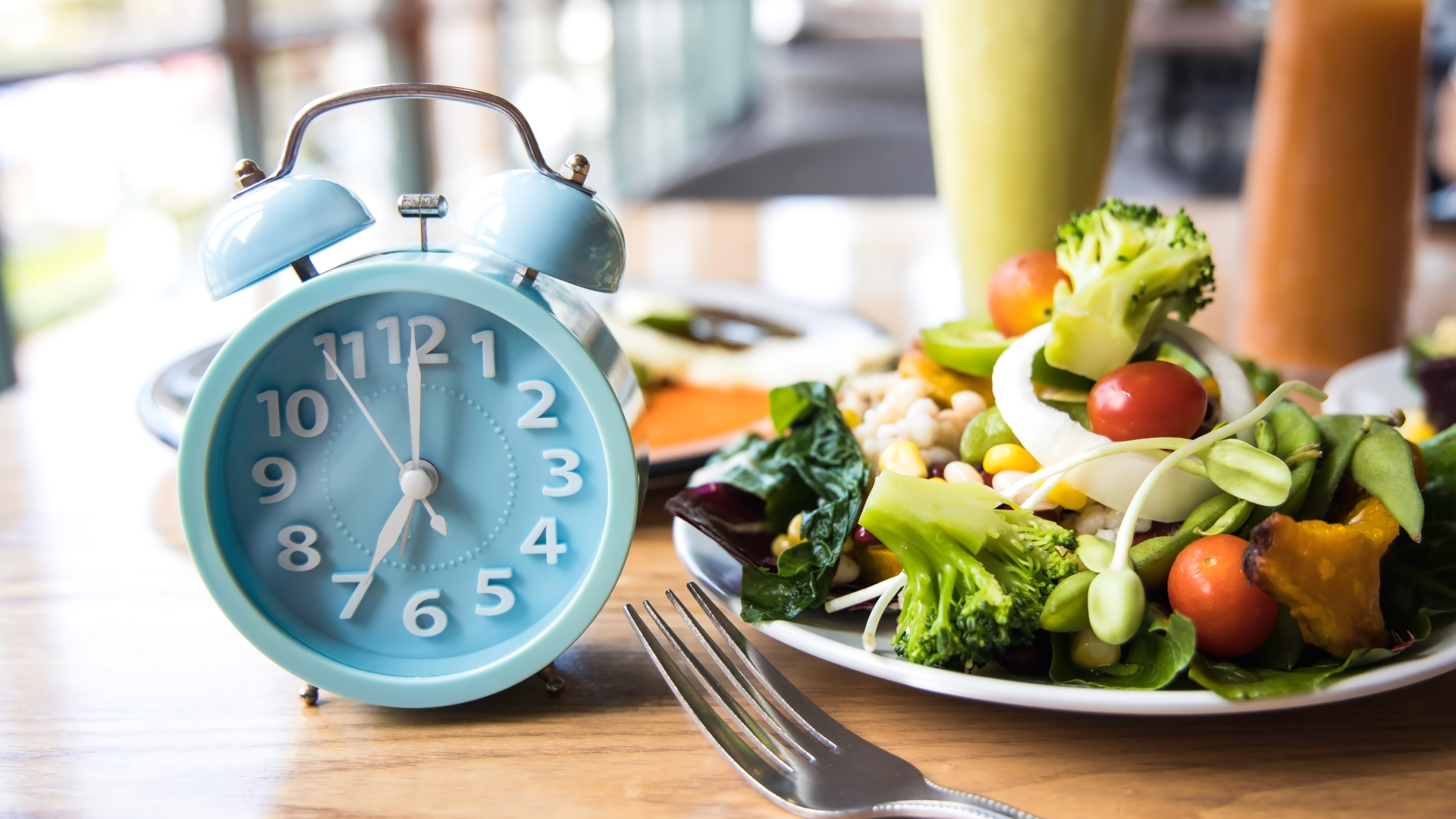Have you set yourself a target of getting down to 15 percent body fat or lower? We have a few things to tell you.
If you’re on a personal weight loss journey and you’re looking to get your body fat percentage into a lean yet healthy range—we want to help you get there with confidence.
Here, we’re going to serve up some essential body fat advice and offer practical advice on getting your body fat percentage down while keeping that all-important spring in your step.
So, ditch the unhelpful hacks, forget the fad diets, and get one step closer to your ideal body composition—the healthy way.
Let’s begin.
What is ‘body fat percentage'?

Body fat percentage measures the ratio of fat compared with lean mass (like muscle and bone).
It's a good indicator of health since it offers an insight into the body composition of a person rather than looking at someone’s weight alone.
Why? Well, because it’s a measurement of the amount of body fat as a percentage of overall mass. Body fat includes the fat found underneath our skin and visceral fat, which hugs internal organs.
Many of us strive to reduce the amount of subcutaneous fat stored in our bodies since this is the most visible type. This type of fat might make us appear a bit ‘wobbly' and what society calls ‘overweight’.
But get this…research shows that it's actually the hidden visceral fat that is more damaging to our health.
This type of body fat is associated with metabolic disease, insulin resistance, and an increased risk of death.
What's an ideal body fat percentage for your gender and age?

The amount of fat we process and store also increases as we age.
So, what is an ideal level of body fat for your gender and age range?
Let’s take a look….
- Women aged 20 to 40 years old: The healthy range is considered between 11 to 23% body fat.
- Women aged older than 40 years: The healthy range is considered between 23 to 26% body fat.
For older women, it's normal to have higher fat percentages. This shows how our bodies can change as we age but still remain healthy.
How age influences your body fat percentage

Age can influence your body fat percentage in a number of ways. Why? Well, because our levels gradually increase as we head into middle age.
Research also shows that body fat then decreases again as people transition from their 60s into slightly more golden age groups.
This is partly due to biological changes but also because our lifestyle habits often change, too.
Juggling children, work commitments, or retiring from a career can all have an impact on your physical activity levels, the food you eat—and of course— your body weight.
Here are a few of the factors at play as you age…
- Metabolism slows down
- Visceral body fat collects around organs
- Physical activity levels decrease
- Muscle wastage happens due to age-related sarcopenia
- Energy levels decrease
- Less free time to look after your health
Although some of these changes are biological, others are within your control. This means that you can take steps to minimise the amount of body fat you gain with age.
Top tip: Read our insider guide on sneaky ways to burn calories throughout the day for practical hints on shedding body fat the healthy way.
This is what different body fat percentages look like

Women naturally have higher body fat percentages than men due to their hormonal balance and natural body composition.
As a rule of thumb, women will have around 10% more body fat than men, but that doesn't mean they're at a disadvantage.
In fact, a six-pack tends to appear around the 19% level for women.
But, before we get into that—we want to say this. Body fat percentage aside, everyone is slightly different—it’s what makes us unique.
Your natural body composition is yours and yours alone. If you learn to love yourself first, you’ll be in the best possible position to lose weight and reach a healthy body fat percentage that suits…you.
25 to 30 percent body fat
For women, having 30% body fat is generally considered unhealthy. It can increase your risk of chronic disease.
A female body with 25 to 30% fat may look a little overweight. Women with this amount of fat may have a slightly rounded belly. Having 25% doesn't carry the same health risks as 30%, but it's still considered ‘excessive’ in men.
20 percent body fat
Having 20% body fat is considered healthy in both genders. Women usually have a fit overall appearance and look pretty well-toned with this level of body fat.
15 percentage body fat
When you get down to this percentage as a woman, this can be a little unhealthy and can make you feel pretty sluggish if you’re not eating the right foods.
10 Percent body fat
So, what does 10% body fat look like? This is where the body composition becomes leaner, and those magical six-pack abs appear for men. It’s still considered a healthy body fat percentage.
But women should treat this level of body fat percentage carefully as it can be detrimental to their health. It’s not really advisable to go this far.
Shrinking organs, damage to the nervous system, and dehydration can happen if body fat becomes too low.
How to take your body fat measurement

Taking an accurate measurement is important to determine your starting point. Once you know your body fat percentage, you can plan your fitness journey to a lean body mass.
Here are some of the most accurate methods for finding out your fat percentage.
1. Body circumference measurements
First up, we have the waist circumference measurement method (no body fat charts required).
Measuring the circumference of your body is simple, cost-effective, and they do it in the military.
Everyone’s body shape is slightly different, so measuring your body’s circumference will give you a fairly accurate gauge of your fat percentage.
Here’s how to do it…
- Take a soft measuring tape and make sure it’s not twisted
- Place it snug (but not too tight) around your waist
- Take your measurement
- Use a calculator or converter to get a rough idea of your body fat percentage
Note: While this is a convenient way to get a gauge of your body fat percentage, it’s not 100% accurate.
2. Body mass index (BMI)
This is one of the most popular ways to measure and calculate body fat. Body mass index (BMI).
Calculating your BMI will give you a good idea of your general body fat percentage. This tried-and-tested calculation will also tell you whether you’re a healthy weight for your size and age.
To discover your BMI, you can do this simple calculation…
Divide your current weight in KG by your height squared.
Alternatively, you can just use a simple BMI calculator and find out if you’re a healthy weight within a minute. The choice is yours.
3. Skinfold measurements
To get an idea of your body fat level, taking skinfold measurements with some purpose-built calipers is another viable option.
Digital calipers aren’t expensive and they last you a long time. Using this essential fat measuring tool will empower you to take measurements on any part of your body—then use an online calculator tool to find out your body’s fat percentage. Simple!
Is reaching 10 to 15 percent fat percentage safe for women?

When you have low body fat, you might be able to show off your abdominal muscles and lean physique—but is it healthy?
Well, as we mentioned, having a significantly low body fat level can pose health risks and just make you feel drained.
You should approach any goals to go below the 15 percent mark with caution as it’s not considered to be a particularly healthy percentage for women. And if you’re going for around 15 percent body, going slow and steady is key.
You should always focus on making sustainable lifestyle tweaks first, focusing on eating well and weaving plenty of positive movement into your day.
Do the right things, love yourself, focus on small wins—and the rest will follow. For insider advice on making the right choices on your weight loss journey, check out our ever-growing library of positive lifestyle tips.
Effective ways to reduce body fat percentage
If you're looking for ways to reduce your level of body fat, you can start with some simple changes to your diet and exercise regime.
Here are a few of the most effective options for your consideration…
- Manage your calorie and macronutrient intake to ensure you don't have a surplus
- Do low to medium-intensity cardio sessions for 30+ minutes
- Increase your lean muscle mass so that you burn more calories at rest
- Drink less soda and alcohol
- Weave a little more exercise or movement into your weekly routine
- Avoid fast food, processed products, and sugary sweets
- Include stress-relieving activities like yoga into your routine
- Take a metabolism-boosting supplement
Taking these steps can help you reduce your body fat down to around the 15% level in a way that’s healthy and balanced.
Beyond that, you'll need to make stricter commitments and avoid any activities with the potential to derail your efforts.
Top tip: Read our guide on how to lose weight without calorie counting for positive ways to reach your weight loss goals.
How to get to less than 15 percent body fat
If you want to get close to 15 percentage body fat percentage—or get to where you want to be weight-wise without the unhelpful hacks or fad diets—here are some hints to help you on your journey.
Weight Training
Weight training will not only build muscle—but it’s essential for achieving a lean body. This type of exercise burns calories and can help you achieve the deficit needed to reduce your body fat percentage.
But developing muscle mass will also mean that your body burns more calories at rest so you get a dual benefit. Oh, and it will also improve your bone density. Bonus.
Lifting weights, doing strength-based classes, or calisthenic exercises will all help you to increase muscle tone.
Just be sure to eat enough protein to support the extra demands on your body, otherwise, you may end up losing muscle instead of gaining it.
Cardio
There are two approaches to cardio when it comes to burning fat. The first is the age-old ‘slow and steady' method.
This involves long-duration cardiovascular exercises at a low to medium intensity. Think jogging for 30 to 40 minutes on a treadmill.
Working out for more than 30 minutes tends to use up all of your carbohydrate stores and forces your body into fat-burning mode.
The second approach is high-intensity interval training (HIIT). This involves alternating periods of fast and demanding activity (such as sprints or burpees) with very short rest intervals.
HIIT burns a lot of calories and boosts the metabolism, too (perfect if you’re aiming for a healthy body fat range).
Diet
If you’re on a quest to achieve lower body fat levels, what you eat matters. To lose weight consistently, you’ll need to consume fewer calories than you can consume (this is commonly known as a ‘calorie deficit’).
But (and this is a big but), you must get your daily fill of healthy nutrients. So, eat a balanced mix of vibrant whole foods and add plenty of lean protein to your diet.
If you’re the kind of person who juggles a million plates every day, adding a quality meal replacement shake into the mix will help you fill in any nutritional gaps while fueling your body with the energy it needs to succeed.
Top tip…
Taking a trusted appetite suppressant or metabolism-boosting weight loss supplement can also help you get the most out of your diet and exercise efforts.
Bonus…

Fat loss is influenced by more than calories alone. Although diet and exercise account for the bulk of it, there are other factors at play.
Changes in hormones, stress, or other emotions can all affect how our bodies crave food and store fat.
Getting enough sleep (seven to eight hours per night) will help towards a healthy, balanced lifestyle.
Working on your stress levels or doing activities that help to manage it will also aid fat loss.
Oh, and if formal exercise isn’t really your thing—you can burn extra calories by weaving a little more movement into your days.
So, go for a walk, do a little dance, hop off the bus early…just do whatever’s convenient and makes you feel good.
Getting to 15 percent body fat: the caveat…

If you’re going for a lower body fat percentage, we would advise caution as it’s not considered a healthy percentage for women. Please bear this in mind when making the decision, but if you decide to go for it, you’ll need to take extra care.
Without enjoying a balanced diet (with the odd treat thrown in), making sustainable lifestyle tweaks, and taking your time—you’ll run into trouble.
The main thing is to respect yourself and feel good. Losing weight should make you feel empowered and energised. And anything that stands in the way of that isn’t worth it.
So, move forward with pride, positivity, and patience. Make healthy choices, seek the support of loved ones, and you’ll reach a healthy body fat range that suits…you.
We wish you the best of luck on your journey and for more positive advice, check out our essential tips on manifesting weight loss. You’ve got this.




